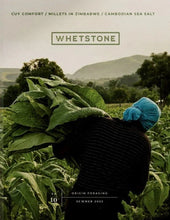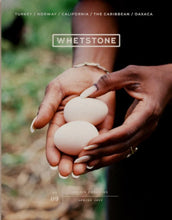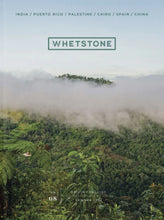Founded in 2017 by Stephen Satterfield, Whetstone magazine is minority-owned and led by a diverse group of women and people of color. The writing style and the stories told reflect this diversity in their richness and character with contributors from around the globe.
Volume 10
Whetstone: Volume 10 digs into various nooks and crannies of food history and regional cuisines. From the forests that provide the wood for Argentine asados, to the humble and drought-tolerant millets that can replace maize in Zimbabwe, to Harriet Tubman’s home in Auburn, New York, these are the stories that are right in front of us, yet ripe for exploration. We also look at the ideal spot for oyster farming, the cuisine of Turkey’s Black Sea region, a personal relationship with the cuy of Peru and a not-so-sweet history of sugar beet farming.
Volume 9
This issue continues exploring the theme of origin foraging, also explored in issue 8.
Contributors include front cover artist Araba Ankuma with the photo documentary project “These Hands,” covering origin stories of contemporary Black farmers along the U.S. West Coast. Kang-Chun Chen writes abut how Norway’s semi-nomadic Skolt-Sami population maintains strong cultural ties to reindeer consumption in the face of evolving government regulations.
Alba Cambeiro addresses the ancient roots of present day olive oil production in Kilis, Turkey. Jahdé Marley and Daniel Boyce explore the diverse, homegrown beginnings of commercialized rum production across the Caribbean. And Andrea Aliseda and Steven Salcido present queer, Indigenous Yoeme midwife Sewa Yuli’s incorporation of traditional ingredients like nixtamalized maíz into birthing rituals.
Volume 8
Whetstone: Volume 8 focuses on origin foraging. Contributors include Yasmin Khan on eating a Punjabi chickpea stew on a Greek Island; Israel Melendez Ayala on the history of coffee cultivation and trade in Puerto Rico; Soraya Kishtwari on the cultural import of chopsticks in China; Vidya Balachander on Indian cooks who are selling homemade food during the Covid-19 pandemic; and Emiliano Ruprah on the history of chocolate in Mexico.





